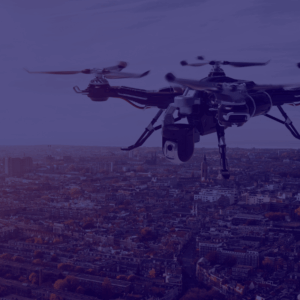In recent years, Latin America has emerged as one of the most “interesting” regions for ransomware groups. This isn’t just due to the sheer number of attacks, but also the growing sophistication of tactics and the attractiveness of the “Latin American victim” for threat actors.
The regional context and recent evidence
World Bank report, Latin America and the Caribbean have become “the region with the fastest growing number of reported cyber incidents,” averaging 25% annually over the past decade. An analysis by the independent Center for Cybersecurity Policy highlights that, despite limited resources, countries in the region are slowly improving their resilience but still lag significantly in incident response and workforce development.
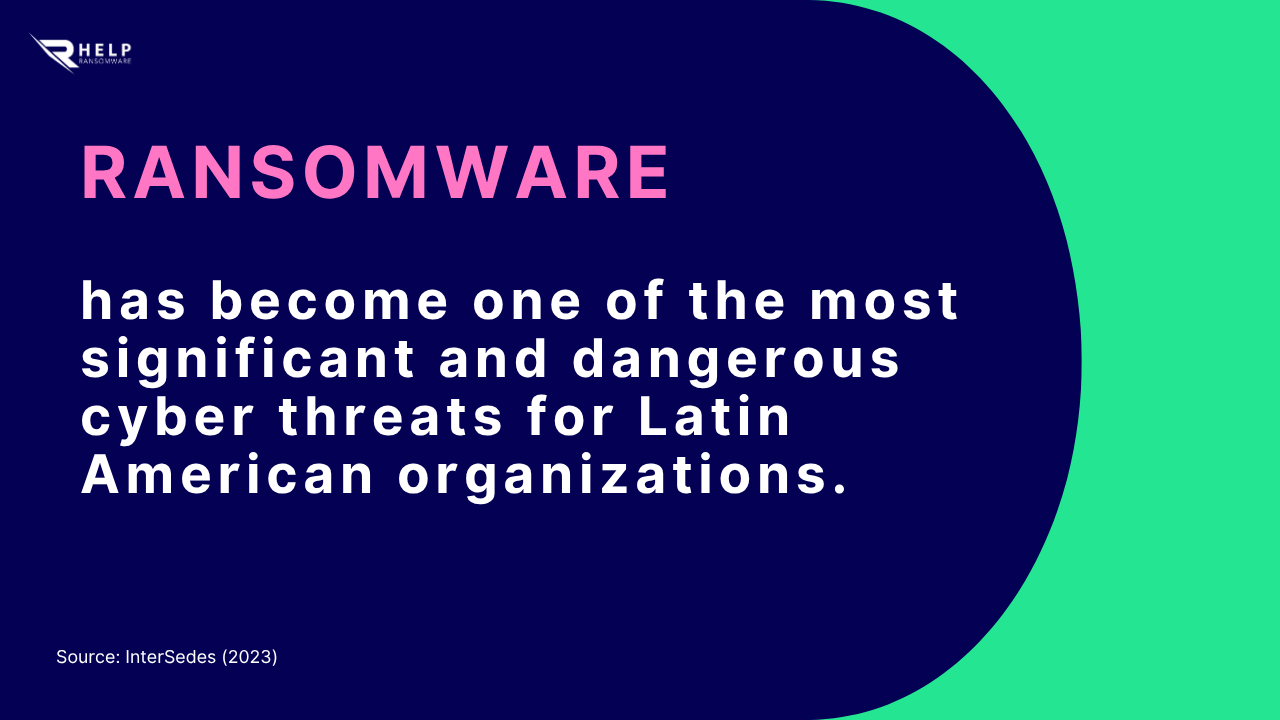
CrowdStrike ’s 2025 report notes a 15% increase in Latin American victims reported on data extortion sites between 2023 and 2024, and a 38% increase in access broker listings in the region.
These indicators paint a picture of high risk: rapidly digitalizing regions, often with outdated or insufficiently protected infrastructure, and cybercriminals who see Latin America as fertile ground.
Why are Latin American companies particularly at risk?
Several conditions converge to make organizations in the region an ideal target for ransomware attacks:
a) Rapid digitalization but with a security gap
The pressure to go digital has pushed many Latin American companies and organizations to modernize IT infrastructure, cloud computing, and online services, often without adequately aligning security. In a context of uneven technological maturity, this creates a larger attack surface. The MDPI study emphasizes that “the region has a unique cybercrime profile” due to the socioeconomic challenges that shape it.
b) Limited training, awareness and human resources
Many organizations lack established awareness programs or dedicated cybersecurity personnel. One text on the topic notes that “the capacity to manage an effective cybersecurity policy is still under construction” in many Latin American countries.
c) Less mature regulatory and infrastructural ecosystem
Regulations, incident response procedures, and public-private cooperation are still emerging in many countries in the region. This makes ransomware attacks more effective and less likely to be detected or disrupted.
d) Redemption economy and the “costs vs. benefits” pact
Latin American companies represent victims that can be economically “manageable” for criminals: they are less protected than large global conglomerates, but valuable enough to justify extensive ransomware operations. Double extortion methods (encryption + data publication) have also gained traction here.
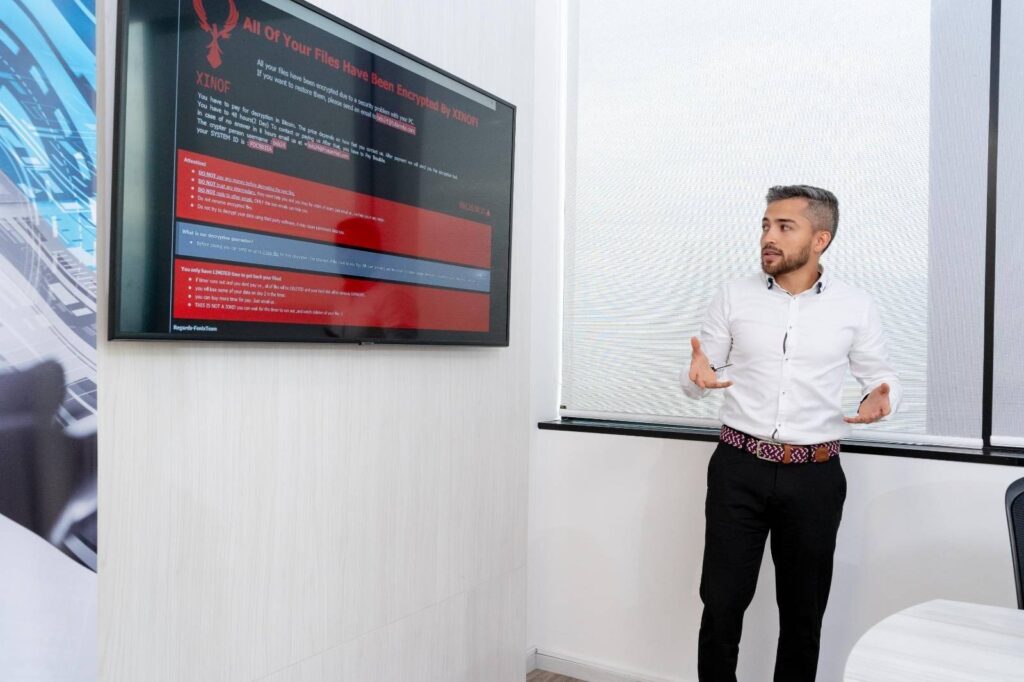
Immediate Ransomware Help
Don’t let ransomware hold your business hostage. Our experts are ready to recover your data and secure your systems.
The most vulnerable sectors in Latin America
Some of the industries that appear to be particularly exposed, according to the Cybersecurity threatscape for Latin America and the Caribbean (2025) report, are:
- Healthcare and health services – where service availability is critical and the attacker’s reputational and operational gains grow.
- Critical infrastructure (energy, utilities, transportation) – where OT/SCADA systems are often less secure.
- Public administration and education – large data volumes, limited IT budgets, high system complexity.
- SMEs and supply chain suppliers – “easier” targets that can act as a bridge to larger networks.
- Financial sector and emerging fintech – Research shows that financial organizations are among the primary targets in LAC: in the 2023-24 report, government institutions accounted for 21% and the financial sector 13% of total attacks.
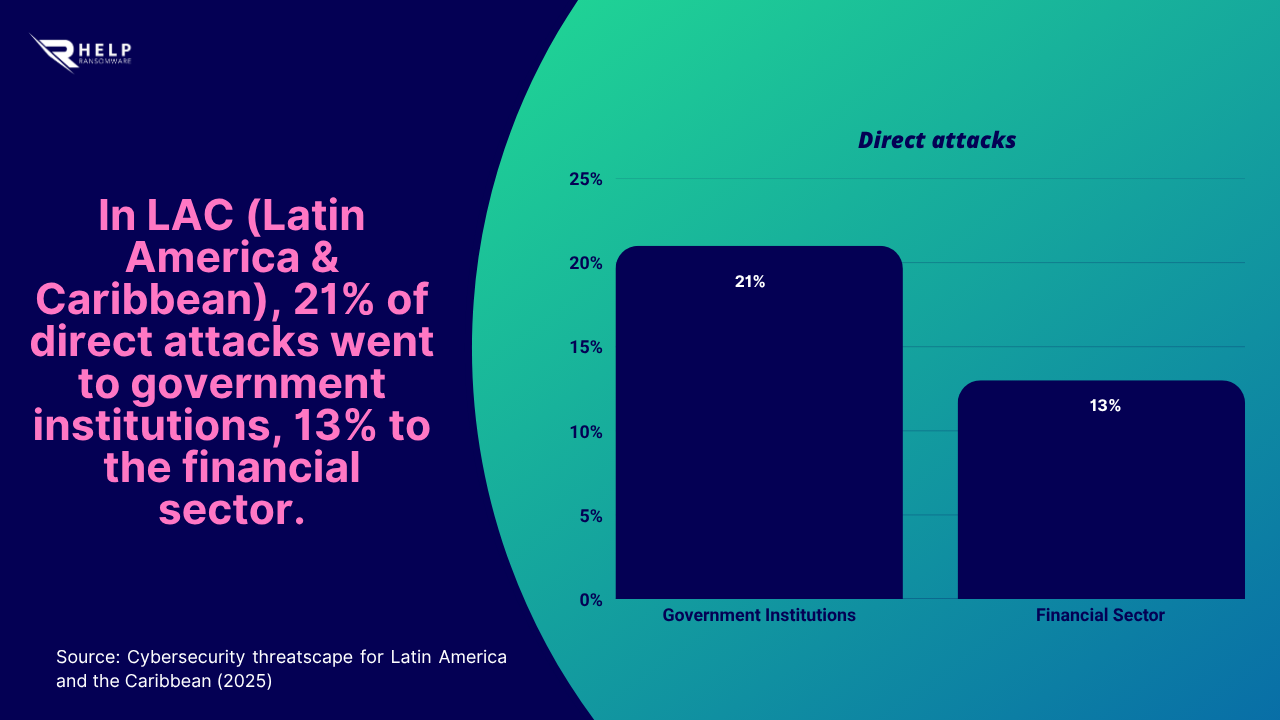
Emerging tactics of attackers in the region
According to the same report, ransomware actors are adapting their tactics geographically and culturally, through:
- Linguistic and cultural localization: Phishing campaigns or ransom demands in Spanish/Portuguese, with regional references.
- Access-brokers and RaaS: Access-broker listings up 38% in the region.
- Double extortion: encryption and data exfiltration for reputational pressure.
- Backup Compromised: Infrastructures with non-isolated backups become ineffective.
- Automation, AI, and the cloud: “fast-paced” infrastructures are pushing attackers toward more agile tools.
- Targeted OT/ICS sector: especially in utilities where protection is often weaker.
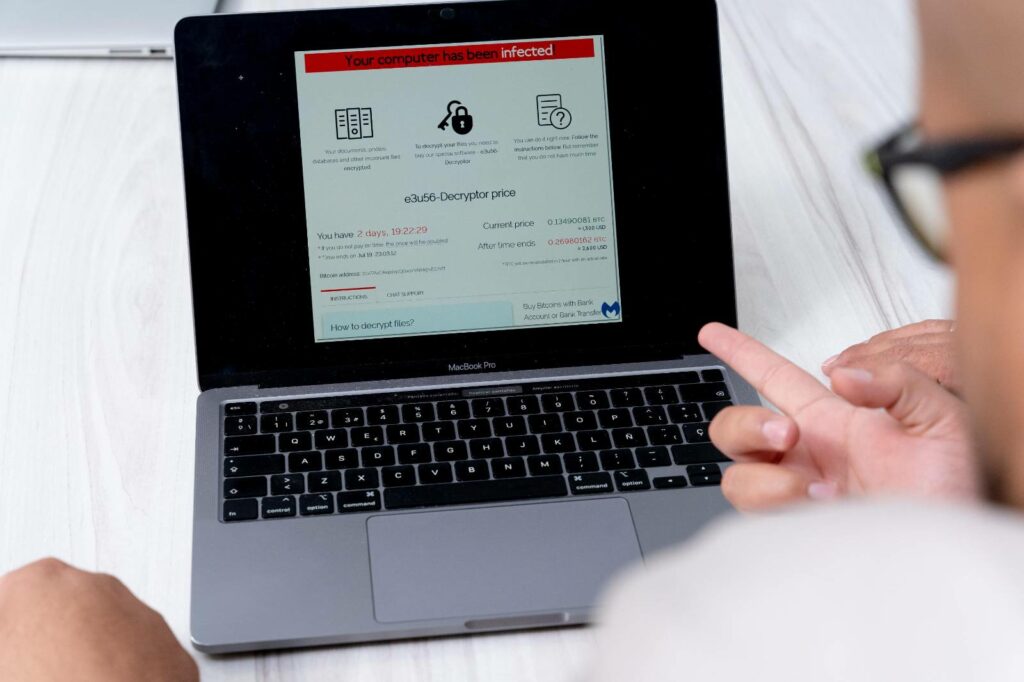
Immediate Ransomware Help
Don’t let ransomware hold your business hostage. Our experts are ready to recover your data and secure your systems.
Recommended Defense Strategies for Latin American Businesses: The Helpransomware Guide
Tackling ransomware in Latin America requires expertise, speed, and local knowledge. Therefore, HelpRansomware supports businesses in the region with a practical, multidisciplinary approach that combines analysis, prevention, and response.
Here’s how we do it:
- Ransomware risk assessment: We analyze your digital infrastructure, identify weak points, and build a vulnerability map specific to your industry and geographic area. This is the first step in understanding your exposure and where to take immediate action.
- Staff training and awareness: We create training programs, with examples and simulations based on real attacks in the region. The goal: to transform your team into the first line of defense against phishing and social engineering.
- Response and Resilience Plan: We help you build an effective operational plan, from immediate containment and forensic analysis to system recovery and crisis communications management.
- Data recovery and secure decryption: In the event of an attack, we will securely recover your files without paying a ransom and in compliance with local data protection regulations.
- Reputation protection and removal of exposed data: we manage the aftereffects of an attack. From the recovery of published data to strategic communication with customers and the media, in collaboration with ReputationUp.
Thanks to this approach, HelpRansomware becomes not just a technical partner, but a strategic ally for companies that want to prevent, manage, and recover from cyber attacks—before they turn into business crises.
Conclusion: prevention as a strategic choice
Ransomware in Latin America is no longer a “remote” threat, but a daily reality. The region presents technical, infrastructural, and cultural vulnerabilities that cybercriminals systematically exploit. But it’s not an inescapable fate: with a structured and consistent approach, prevention works.
Frequently Asked Questions (F.A.Q.)
Because it combines rapid digitalization with still uneven levels of cybersecurity. Many companies have modernized their IT infrastructures without adequate access controls, network segmentation, or staff training.
Furthermore, the region is seen by attackers as a “lucrative” market: targets with valuable data but more limited defense resources.
According to reports from the World Bank and the Center for Cybersecurity Policy, the most affected sectors are:
– Healthcare and hospitals (due to the criticality of services);
– Public administration and education (for obsolete infrastructure);
– Energy and utilities (due to the presence of poorly protected OT systems);
– SMEs and supply chains (for fewer cybersecurity resources).
No system is 100% secure, but you can dramatically reduce the risk with a proactive approach:
– continuing education;
– offline and tested backups;
– network segmentation;
– advanced detection and incident response tools.
1. Isolate compromised systems immediately;
2. Don’t pay the ransom;
3. Contact a specialized team like HelpRansomware;
4. Launch a forensic investigation to understand how the attack occurred;
5. Restore systems from verified backups.
Our data recovery service helps you restore your files without giving in to blackmail.
No. Paying does not guarantee data recovery and, in many cases, exposes you to further extortion. Furthermore, it may violate national or international regulations on sanctions against criminal groups. The safest option is to turn to ransomware recovery.
Yes. HelpRansomware supports companies across the region—from Mexico, Chile, and Colombia to Brazil and Argentina—with services tailored to local language, regulatory, and infrastructure needs. We offer ransomware risk assessments, customized training, response plans, and comprehensive post-attack support.
Many attacks remain dormant for weeks before data encryption. To find out, you can request a vulnerability analysis and proactive monitoring, which allows you to identify suspicious access or lateral movements already underway.



